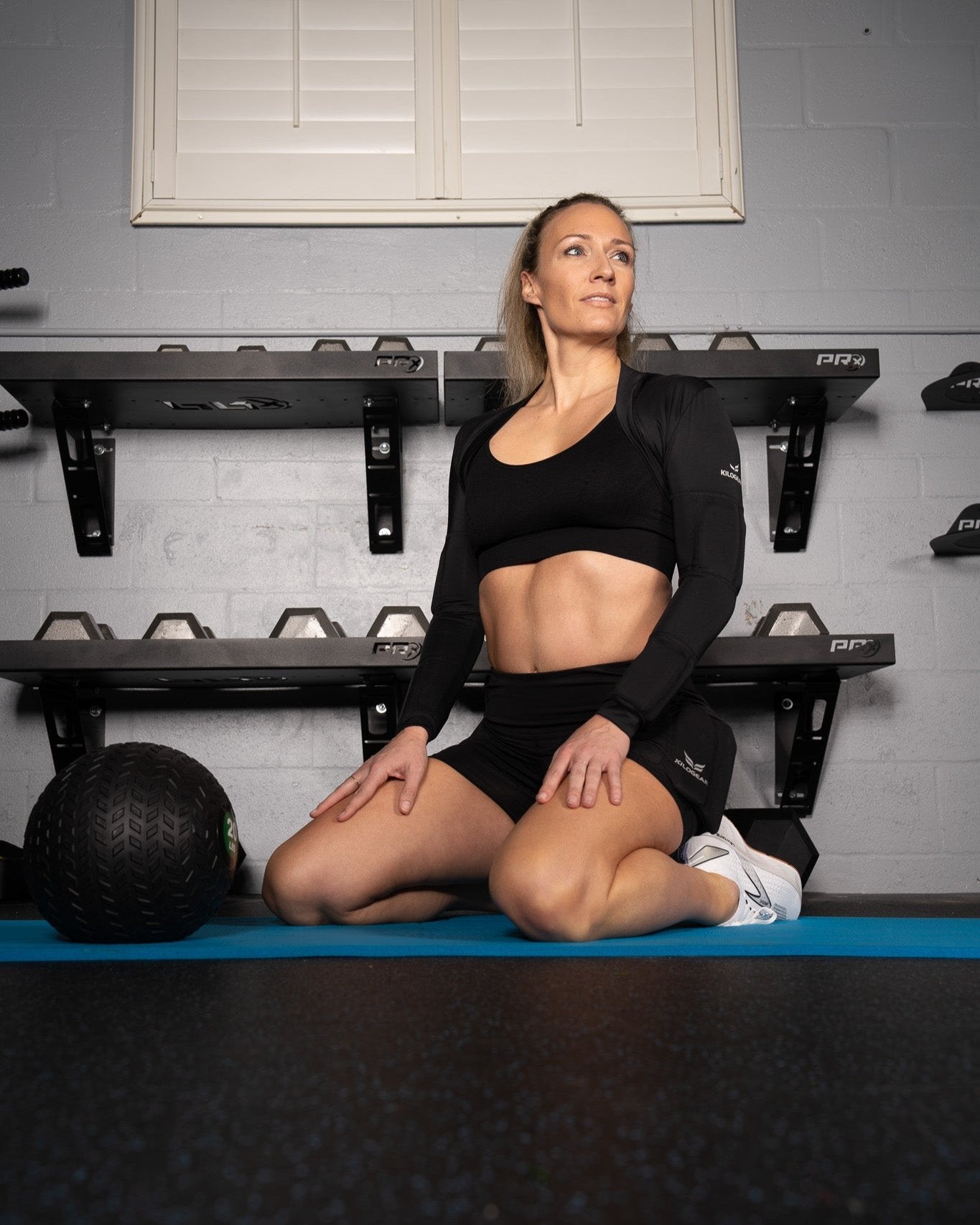As an endurance athlete, you’re no stranger to the physical toll of repetitive movements. Whether it’s long-distance running, cycling, or hiking, the repetitive nature of these activities often leads to overuse injuries. Conditions like iliotibial band syndrome (IT band syndrome), shin splints, and patellofemoral pain syndrome (runner’s knee) are common issues that arise from improper biomechanics and overtraining. According to Northwestern Medicine, overuse injuries like these are among the most frequent problems faced by athletes and can result in long-term setbacks if not addressed early (Northwestern Medicine).
These injuries are just one part of the challenges that endurance athletes face. Beyond physical strain, athletes often encounter other limitations that affect their ability to improve performance. Let’s explore some of these issues:
Plateaus in Performance:
After training for extended periods, it’s common to hit a plateau where you no longer see significant improvements in speed, endurance, or strength. The body adapts to repetitive stress, making it difficult to keep progressing.
Limited Muscle Engagement:
Endurance athletes focus on efficiency—performing the same movements over and over, which can cause certain muscle groups to become dominant while others become underused or "dormant." This can lead to imbalances that hinder performance and even lead to injury.
Strain from Repetitive Movements:
Running, cycling, and hiking require repetitive motions, which can result in overuse injuries, especially when stabilizing muscles or small muscle groups are not sufficiently engaged.
Time Efficiency:
Many endurance athletes spend hours on long training sessions to build stamina, which can lead to fatigue or burnout. Finding ways to maximize workout efficiency without overtraining is a major challenge.
Mental and Physical Fatigue:
After months or years of similar training, athletes can experience mental and physical fatigue, reducing their motivation and ability to push past discomfort during challenging events.

How Weighted Clothing Can Help Overcome These Challenges?
This is where weighted clothing comes in as a game-changing tool to address these issues:
Breaking Through Plateaus:
By adding subtle resistance to your workouts, weighted clothing forces your body to work harder with each movement. This added challenge helps push your body out of a plateau by recruiting more muscle fibers, improving strength and endurance over time without the need to drastically change your routine.
Engaging Dormant Muscles:
Weighted clothing strategically placed on the extremities can activate smaller, stabilizing muscles that are often neglected in typical endurance training. This can correct muscle imbalances and improve overall form, leading to more efficient and injury-resistant movement.
Reducing Strain and Overuse Injuries:
By distributing weight evenly across your body, weighted clothing reduces the repetitive strain placed on your joints and muscles, allowing you to build strength without putting excessive stress on one part of the body. This helps prevent common overuse injuries.
Maximizing Time Efficiency:
Weighted clothing makes your training more efficient by increasing the intensity of each workout. For example, wearing a weighted vest or bands during a shorter run or ride can give you the same benefits as a longer session without added time. This is especially helpful for athletes who want to balance training with busy schedules.
Boosting Mental Toughness:
Training with added resistance not only strengthens your body but also improves your mental stamina. By pushing through the challenge of added weight, you'll be better equipped to handle discomfort and fatigue during races or long-distance events.

How Weighted Clothing Enhances Endurance for Athletes?
Incorporating weighted clothing into your training isn’t just about adding resistance—it’s about maximizing every workout and unlocking new levels of performance, without introducing the risk of injury. Here’s how weighted clothing can be a game-changer for endurance athletes:
1. Increased Muscle Activation
Endurance training often leads to the overuse of dominant muscles while neglecting smaller stabilizing muscles. By adding weight strategically to your arms and legs, you increase muscle recruitment, engaging those neglected muscle groups. This leads to better overall muscle balance, increased strength, and reduced risk of injury.
2. Improved VO2 Max
The measure of how efficiently your body uses oxygen during intense exercise—is crucial for endurance athletes. Training with weighted clothing pushes your cardiovascular system to work harder, increasing your body's ability to process oxygen more efficiently. According to the Cleveland Clinic, improving VO2 max not only boosts cardiovascular fitness but also enhances performance, allowing athletes to run, cycle, or hike longer and at faster paces (Cleveland Clinic).
3. Enhanced Lactate Threshold
Weighted clothing can help push back your lactate threshold—the point at which lactic acid builds up faster than your body can remove it. By incorporating resistance into your training, your body adapts to working harder at higher intensities, which helps delay fatigue and maintain peak performance for longer durations.
4. Time-Efficient Training
For endurance athletes, time is a precious resource. Training for long hours can sometimes lead to burnout or leave little time for recovery. Weighted clothing allows you to maximize your training time by increasing the intensity of shorter sessions. For instance, a 30-minute run with weighted gear can yield similar results to a 60-minute run without it, helping you achieve the same gains in less time.
5. Mental Resilience
Wearing weighted clothing isn’t just a physical challenge—it also builds mental toughness. By increasing the resistance during regular training, athletes become accustomed to working harder, helping them develop the mental strength to push through discomfort. This increased mental resilience will be a key asset during races or tough endurance events.

Practical Tips for Incorporating Weighted Clothing into Endurance Training
Now that you understand the benefits of weighted clothing, it’s important to know how to incorporate it effectively into your training without overloading your body. Below are some practical tips and workouts that can help you seamlessly add resistance to your endurance routine.
1. Start Small and Progress Gradually
Just like with any new training tool, it’s essential to start with lighter weights to allow your body to adapt. Begin by incorporating light weighted clothing (0.25 - 0.5 lbs) into your low-intensity runs, bike rides, or hikes. Focus on maintaining proper form and avoiding overexertion. Over time, you can increase the weight or the duration of your sessions with weighted gear as your body becomes more accustomed to the added resistance.
2. Use Weighted Clothing in Specific Phases of Training
For runners, consider using weighted clothing during hill training or sprint intervals to build strength and power in your legs. This will also condition your body to handle more intense efforts during races. Cyclists can wear weighted arm or leg bands during long rides to increase muscle engagement without disrupting their form. Incorporating weighted clothing into uphill rides can simulate resistance similar to riding in tougher conditions. Hikers can wear a weighted vest or shorts during long treks to build endurance and strength, especially when navigating elevation changes.
3. Target Your Weakest Areas
If you tend to experience fatigue in certain areas, use weighted clothing to strengthen those specific muscles. For example, runners can wear weighted calf bands to build endurance in their calves, while cyclists can wear weighted leg bands to improve quad strength.

Sample Workouts for Endurance Athletes with Weighted Clothing
Running: Weighted Interval Training
- Wear light weights (0.25-0.5 lbs) on your arms or legs.
- Warm-up: 10 minutes at an easy pace.
- Intervals: 5 x 2-minute sprints with 2 minutes of rest in between.
- Cool-down: 10 minutes at an easy pace.
This workout will push your cardiovascular system and build strength without overwhelming your muscles.
Hiking: Weighted Trek for Endurance
- Wear a light weighted short combined with a pair of weighted shorts (0.5 lbs).
- Choose a trail with varied elevation.
- Hike for 60-90 minutes at a moderate pace, paying attention to your form and making sure to distribute weight evenly.
This workout helps build the stamina needed for long treks while strengthening your core and lower body.
Cycling: Hill Repeats with Weighted Gear
- Wear light weights (0.5 lbs) in either a weighted shirt and weighted shirts, combined with weighted arm and leg bands.
- Warm-up: 10 minutes of easy riding.
- Hill Repeats: Find a moderately steep hill and cycle uphill for 2 minutes at a high effort. Recover on the downhill for 2-3 minutes. Repeat 5-7 times.
- Cool-down: 10 minutes of easy riding.
This workout enhances both leg power and cardiovascular endurance.
Weighted clothing offers endurance athletes a powerful way to push through performance plateaus, build strength, and improve stamina. Whether you're a runner, cyclist, or hiker, adding resistance through strategic weight placement helps you maximize every workout, engage more muscles, and reach your endurance goals faster. With the right approach, weighted clothing can be seamlessly integrated into your training routine, giving you the edge you need to perform at your best.
Ready to take your endurance training to the next level? Explore weighted clothing options that are designed to boost performance without sacrificing comfort or safety. Whether you’re looking to increase your VO2 max, improve muscle activation, or enhance your time efficiency, weighted clothing is the game-changer you’ve been waiting for.
Start now, and unlock your potential today!











